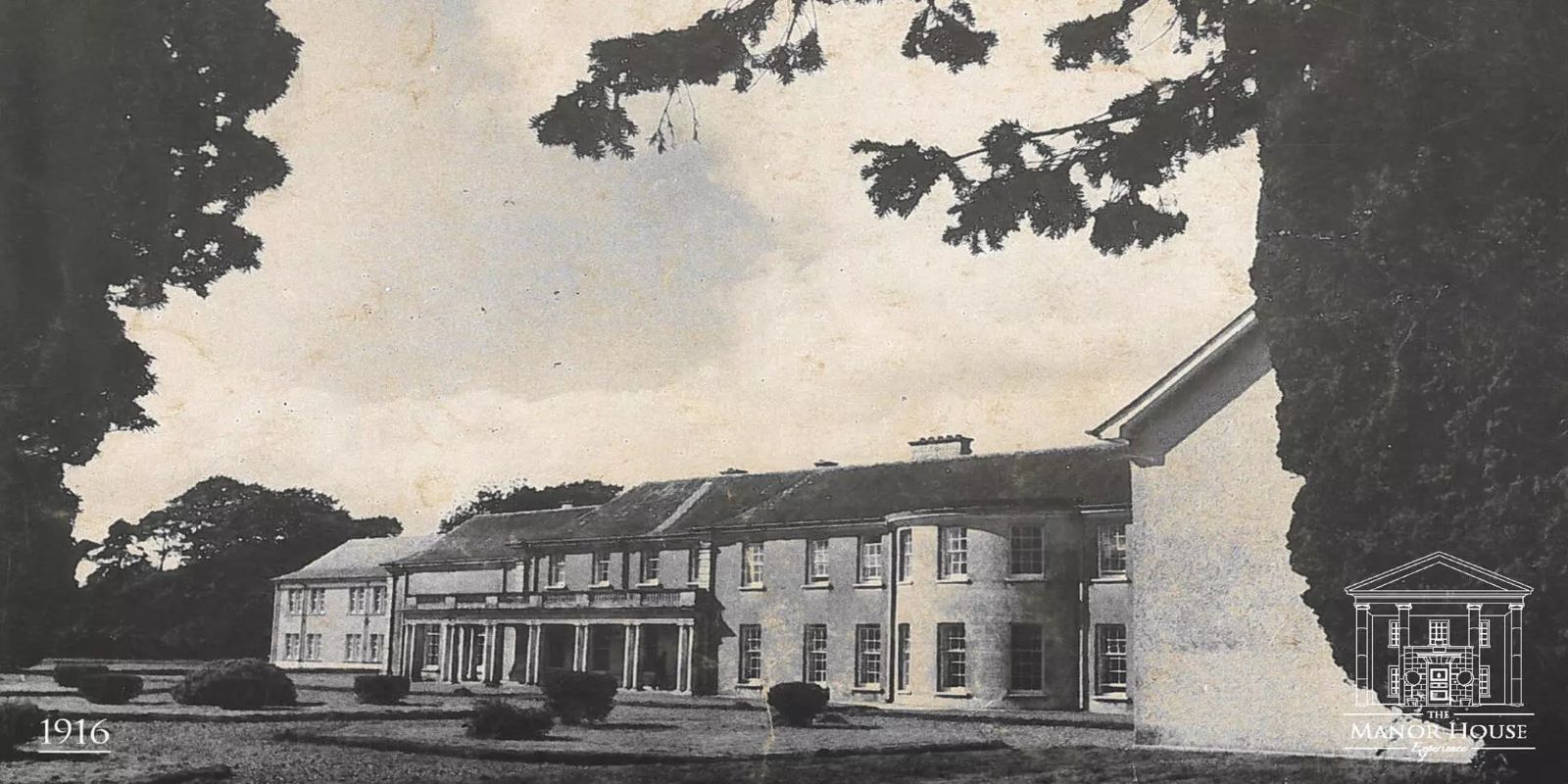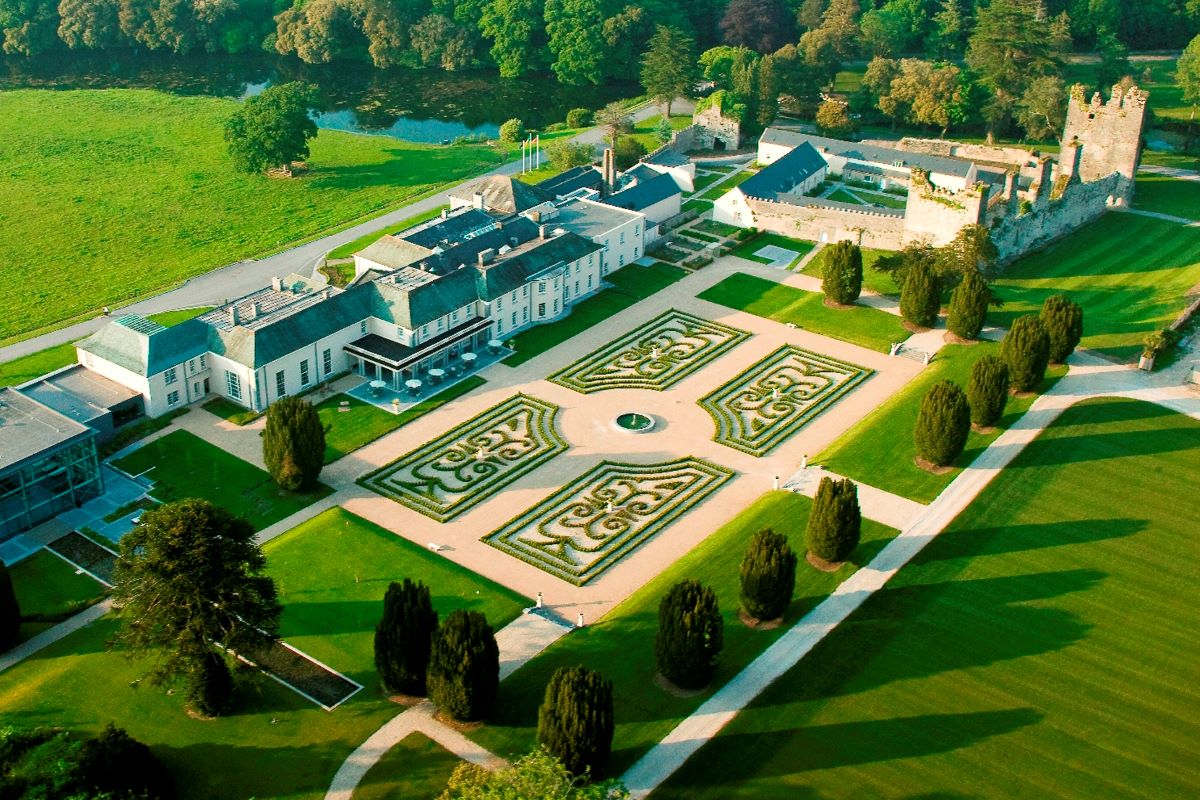Receive for Free - Discover & Explore eNewsletter monthly with advance notice of special offers, packages, and insider savings from 10% - 30% off Best Available Rates at selected hotels.
history
Discover Castlemartyr Resort, which was once part of a castle thought constructed by the Knights Templar during the Middle Ages.
Castlemartyr Resort, a member of Historic Hotels Worldwide since 2022, dates back to 1210.
VIEW TIMELINEA member of Historic Hotels Worldwide since 2022, Castlemartyr Resort is a renowned five-star destination that offers nothing but the best in luxury hospitality. Indeed, this spectacular retreat offers a variety of experiences to discover, which are certain to enchant countless cultural heritage travelers. But the locale has not always been a world-renowned resort. On the contrary, the facility was originally part of a castle complex that harkened back to the height of the Middle Ages. In fact, the first iteration of the citadel debuted in the early 13th century, with sources claiming it served as an outpost of the legendary Knights Templar. Known then as “Ballymartyr,” the castle itself quickly developed an imposing reputation due to its command over a strategic pass connecting the city of Cork to the River Blackwater. Its military significance inspired the 4th Earl of Ormond, James Butler (and governor of the area) to make the castle the official seat of power for his local representative, the Seneschal of Imokilly, during the early 15th century. The Earl extensively renovated the entire compound, doubling the size of its towers and parapets. Upon completing the work, the Earl of Ormond granted the title of seneschal, as well as the castle, to James FitzGerald, 6th Earl of Desmond, in 1420. (Referred to locally as the “FitzGeralds of Imokilly,” James FitzGerald and his family had lived in the area since the end of the Anglo-Norman invasions of Ireland.) The FitzGeralds of Imokilly subsequently ruled from the castle for generations, with the local peasantry both respecting and fearing them.
But the FitzGeralds emerged as principal actors against Queen Elizabeth I during the Desmond Rebellions, forming a part of the Geraldine League. In response, numerous lords allied with the English monarchy besieged the castle throughout the conflict, notably Sir Henry Sidney and Thomas Butler, 10th Earl of Ormond. By the conclusion of the uprising, the FitzGeralds of Imokilly had lost control over their ancestral home to Sir Walter Raleigh, an incredibly influential English statesmen. However, Raleigh eventually sold the castle and its lands to Richard Boyle, 1st Earl of Cork, in 1602. The Boyle family called the location home for many years thereafter, which gradually became known as “Castlemartyr Castle” among the residents of the nearby villages. They constructed their own additions onto the compound, including a two-story manor that featured towering chimney stacks. Nevertheless, the castle soon found itself the target of marauding armies again when the Irish Confederate Wars erupted in the mid-17th century. Castlemartyr Castle was attacked numerous times, culminating with its near destruction at the hands of Anti-Confederate forces during the 1640s. After being rebuilt in the conflict’s wake, Castlemartyr Castle saw even more fighting several decades later amid the Williamite War in Ireland. Armies loyal to King William III of England assaulted the location in 1690, leaving the castle as a ruin.
While the castle itself remained abandoned, the Boyles infused new life into the surrounding estate. The family transformed the land into a fully functional farm, centered around a new gorgeous manor. They continued to renovate the manor over the next two centuries, adding on numerous extensions that showcased a variety of unique architectural influences. Perhaps the greatest were the many Victorian motifs that the Boyles had installed during the 19th century. They even redeveloped the attending grounds, which gradually featured an intricately manicured series of gardens. (The best included a collection of trees planted by accomplished landscaper John Saul.) Despite the work they invested into the estate, the Boyles moved away from Castlemartyr estate around the dawn of the 20th century, with a new family—the Arnotts—acquiring it in 1907. A Roman Catholic boarding school for adolescents called “Carmelite College” then occupied the location beginning in the 1920s. But in 1996, the estate was yet again unoccupied. Thankfully, ambitious hoteliers bought the location and began renovating the facility into a stunning resort. Using the Castlemartyr House as the focal point, the owners brilliantly turned the historic site into an outstanding vacation retreat that also embraced its architectural heritage. Debuting as the “Castlemartyr Resort” in 2007, the future of this fascinating location has since never looked brighter. Guests today can even view the ruins of Castlemartyr Castle during their stay, as the historical landmark has been incorporated into the greater resort compound!
-
About the Location +
Located in the heart of Ireland’s Ancient East, Castlemartyr Resort is just a short drive away from the historic Irish city of Cork. While historical records about its founding are sparse, oral tradition has suggested the first known iteration of Cork appeared as a monastic community during the 7th century. The village specifically serviced a cathedral created by Saint Finbarre (or Fin Barr) that attracted many secular academics and religious figures from across Europe. It also sat on an island within the meandering Lee River, granting it protection against groups of marauding bandits. The safety the natural geography afforded was imperfect, as Viking raiders managed to periodically sack Cork throughout the 9th century. A few of those Vikings settled the area not long thereafter and formed their own prosperous trading center within the town’s surviving neighborhoods. Their maritime commerce introduced great wealth into Cork, causing it to expand to the size of a city over several decades. But the peace still proved to be short-lived though, with English settlers eventually conquering the region amid King Henry II’s invasion of Ireland. (Historians today refer to those colonists as the “Anglo-Norman”—the descendants of French knights that had supported the Plantagenet dynasty in its own conquest of Great Britain a century prior.) Now under English suzerainty, the municipality received an official municipal charter from Prince John, Lord of Ireland, in 1185. To avoid suffering the same fate as their predecessors, the city’s new social elite gradually erected a series of imposing defenses that were centered on a huge wall. Commerce remained strong in Cork, with the city becoming a major exporter of wool and hides, as well as an importer of salt, iron, and wine. Cork thus emerged as a bastion for local English authority throughout the rest of the Middle Ages, even though its ruling lords began to culturally integrate with the local Irish population.
Indeed, the city was soon embroiled at the center of several important historical events in both English and Irish history. During the Wars of the Roses, for instance, a pretender to the throne of England, Perkin Warbeck, arrived in Cork and received significant support from its residents. They went so far as to start an uprising for the imposter, who falsely claimed to be one of the missing “Princes in the Tower.” The city later became a stronghold for King Charles I during the English Civil War, although it eventually sided with the Parliamentarians following his execution in 1649. Then, in 1690, forces loyal to King William III captured Cork during the Williamite War that broke out following his ascension to the English throne after the Glorious Revolution. But the greater cultural atmosphere in Cork had also become firmly Irish, as epitomized by its residents’ participation in the Second Desmon Rebellion and the Irish Rebellion of 1641. This patriotism endured for generations, ultimately forming part of the larger Irish Home Rule movement of the 1800s. It was even a battleground in the subsequent Irish War of Independence, which established the first Irish Republic during the early 20th century. In the present, Cork continues to be one of Ireland’s most influential cities in terms of politics, economics, and culture. The community is home to many outstanding cultural attractions, including the Crawford Art Gallery, the Cork Public Museum, and the Cork Opera House. This fantastic destination is also celebrated for its countless historical landmarks, including Fort Elizabeth, the Cork City Gaol, the English Market, and Blarney Castle. Additional cultural heritage sites are located just outside of the city, too, of which many are accessible via Ireland’s famed Wild Atlantic Way. In fact, one end of the trail actually begins just south of Cork in the little town of Kinsale, before winding its way around the coast toward County Kerry and beyond!
-
About the Architecture +
While Castlemartyr Resort contains a wealth of stunning architectural styles, most can best be described as being “Victorian” in nature. Due to the growth of the middle classes in the mid-19th century, an increasing number of individuals had access to unprecedented amounts of wealth for the first time. The onset of the Second Industrial Revolution also made unique, expensive building materials more affordable due to the technological innovation of mass production. As such, architects could create intricate designs for a much wider audience, giving them far greater creative freedom than they had ever enjoyed in the past. More affluent people in the Victorian Era typically wanted to flaunt their newfound affluence. They developed a deep appreciation for lavish aesthetics that embraced ostentatious details. In some cases, those individuals revived historic architectural styles that were then modified to suit their contemporary tastes. Many different architectural styles were subsequently created, including Italianate, Second Empire, and Gothic Revival. But while the design aesthetics of the Castlemartyr Resort are quite varied, the Boyle family mainly relied upon Victorian design principles like Queen Anne to influence the structures that would eventually constitute Castlemartyr Resort.
Named in honor of the 18th-century British monarch, Queen Anne, the architectural form itself started in Great Britain before migrating to Ireland and elsewhere. Its name was misleading though, as it had borrowed its design principles from buildings constructed during the European Renaissance. While the appearance of Queen Anne-style buildings may differ considerably, they are all united by several common features. For instance, they are typically asymmetrical in nature and are built with some combination of stone, brick, and wood. Those buildings also featured a large wrap-around porch, as well as a couple polygonal towers. Those towers may also be accompanied by turrets along the corners of a building’s exterior façade. Structures designed with Queen Anne-style design principles may also have pitched, gabled roofs that feature irregular shapes and patterns. Intricate wood carvings are a common sight throughout their layout, which are often designed in such a way to resemble different objects. As such, guests viewing the architectural features of Queen Anne architecture may feel as if they had been staring at an illusion! (Clapboard paneling and half-timbering are a few other forms of woodworking that are regularly found somewhere within a Queen Anne-style structure.)


























